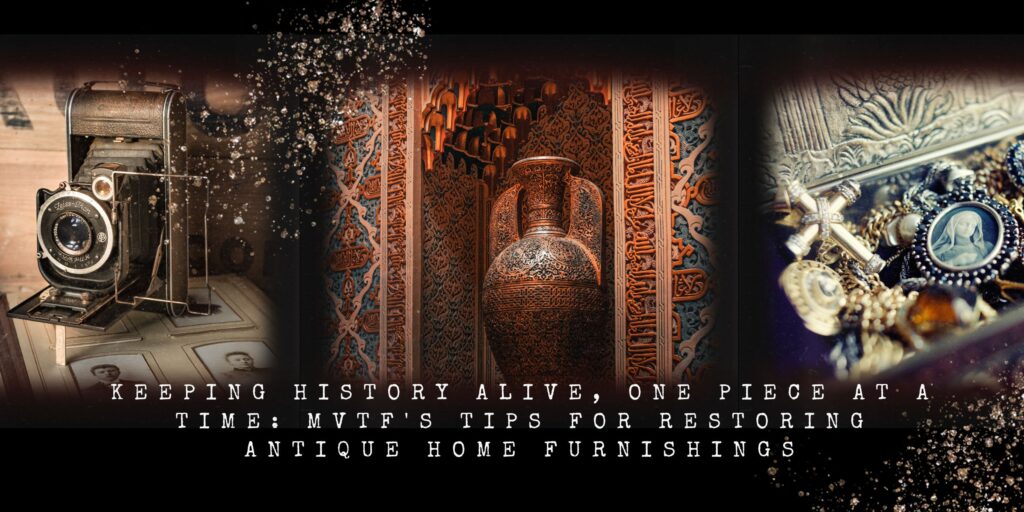Besides their monetary worth, antique furniture also has sentimental value because of its association with the past.
The preservation of historical artifacts, whether they are family heirlooms or prized antiques, is essential to our sense of continuity with the past.
In addition to its well-known mission of restoring and saving vintage military vehicles, the MVTF also provides resources for restoring and preserving personal artifacts, such as furniture and photographs.
Learning About Old Furniture
Furniture, decorations, and other home goods that are at least a century old are considered antiques.
Because they shed light on bygone eras’ fashions, materials, and workmanship, these objects are extremely valuable historically and culturally.
Understanding the significance and background of an antique piece of furniture is essential for its restoration.
It is crucial to use appropriate restoration methods when restoring antique furniture for the home.
The object’s initial charm and character should always be preserved during restoration.
The plan is to keep it looking as beautiful and natural as possible so that future generations can enjoy it.

How to Restore Old Furniture for Your House
Investigate its background and origin; this will help you choose the best method for restoring it.
An ancient piece of furniture may be more valuable if its history can be traced back to its original owner.
Before beginning any restoration job, it is important to evaluate the item’s current state.
Knowing this can aid in planning the appropriate repair measures.
If you are uncertain of how to restore an antique piece of furniture, you should seek the advice of experts or seasoned restorers.
They will be able to advise you on the best course of action.
When restoring ancient furniture, it is important to use methods and materials that are consistent with how the piece was originally built.
Don’t use anything too modern that would make the object look fake.
Keeping records of the repair process is important for future reference and should be a top priority.
It can increase the item’s value and tell a tale about its past restoration.
Repairing vintage furniture is a satisfying hobby.
It serves as a record of the past and a window into the development of art and industry.
When we restore old furniture for our homes, we can give it a new lease on life while still expressing our unique personalities through our work.
Remember to treat vintage furniture with care and reverence as you restore it so that its original integrity is preserved.
Restoring an item should be done so that it retains its original worth and authenticity.
Cleaning ancient furniture with care is one method of restoring it.
The luster of a used object can be restored through cleaning, as the dirt and grime will be removed.
Use caution, as the incorrect cleaning materials or methods can cause irreparable harm to your prized possession.
Damaged ancient furniture can also be restored by fixing the broken parts.
Some examples of this are replacing missing parts or fixing damaged legs or handles.
It is essential, however, to restore the object using methods and components that are consistent with how it was originally built.
Refinishing is an option when restoring old furniture.
Careful refinishing can bring back an item’s initial beauty, but only if it’s done right.
It is possible to refinish by simply touching up or fixing the current finish, or it can be stripped off and a new one applied.
The most important aspect of repairing old furniture is to keep in mind how much the piece means to its culture and history.
The MVTF and other specialists on restoration have provided guidelines for keeping these items safe so that they can be enjoyed by future generations as part of our collective heritage.
Conclusion
Saving vintage furniture is a great way to keep a piece of history in your house and in your life.
The longevity and worth of these items can be protected by learning their history and significance and applying appropriate restoration methods.
The MVTF is a great resource for learning about restoration methods that can be applied to preserving our own heritage.
We owe it to future generations to preserve these artifacts in the best way possible.
